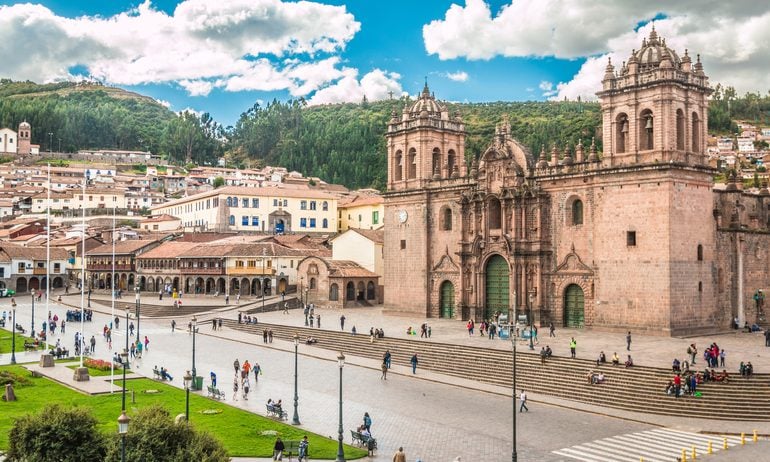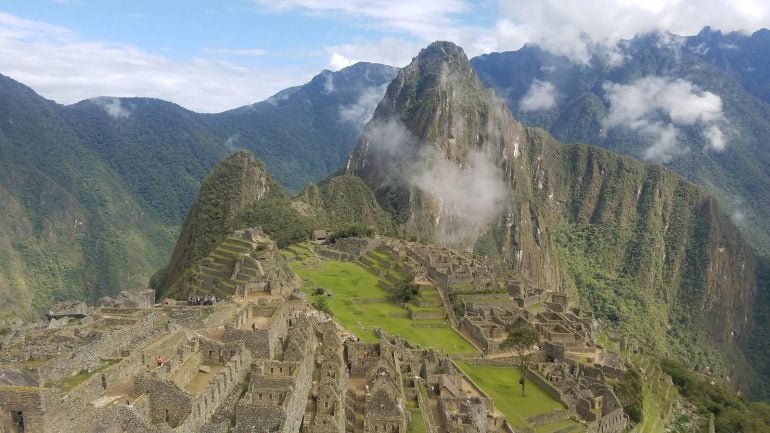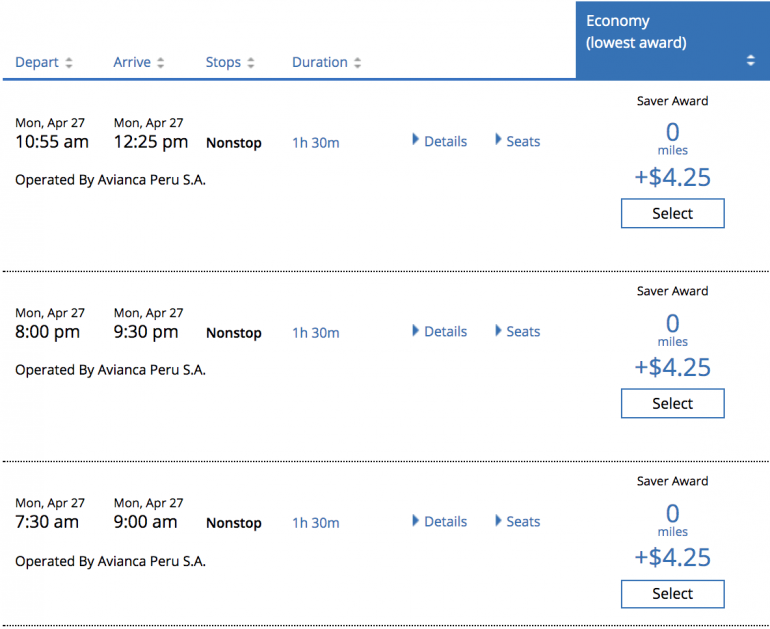How I Used Airline Miles to Fly to Peru for Cheap
This traveler shares their strategy for booking a cheap trip to Peru.

Many or all of the products on this page are from partners who compensate us when you click to or take an action on their website, but this does not influence our evaluations or ratings. Our opinions are our own.
If you’re into history, adventure and gastronomy, there’s a great chance Peru, the Land of the Incas, is “on the list.” It’s also safe to say that Machu Picchu most likely tops that list of attractions to visit there — and for good reason. The most recognizable site of Inca civilization is impressive (to say the least).
As with any place that famous, visiting Machu Picchu is a blessing and a curse. It’s sure to become a memorable experience, but it’s going to be an expensive one, too.

Photo courtesy of Anya Kartashova.
To avoid parting with an arm, a leg, a kidney and your firstborn to pay for the trip, let’s talk about how to leverage airline miles to book an award flight, and then use the money saved on airfare to book the rest of the travel components.
Here’s how I used airline miles earned with a travel credit card to book an adventure to remember in a pre-COVID world and how these tips can help you for your own trip, once you feel safe getting back out there.
» Learn more: The best travel credit cards right now
How I booked airfare from the U.S. to Peru with 44,000 United MileagePlus miles
Prior to the trip, I signed up for the The New United℠ Business Card and earned a nice welcome bonus. The current welcome bonus is: Debut Offer: Earn 125,000 bonus miles after you spend $5,000 on purchases in the first 3 months your account is open. The annual fee is $150.
Although I didn’t have a plan for the miles right away, Peru was somewhere I wanted to visit for a long time, and in summer, I began looking for award flights for travel in November.
Peru falls into the Northern South America region per United’s list of countries and regions. Before United MileagePlus shifted to dynamic pricing, the airline published award charts on its website. In my case, my ideal flights required the same number of miles before and after the shift away from award charts, so I pulled the trigger.
A one-way economy award from Mainland U.S., Alaska & Canada to Northern South America should cost 22,000 United miles at the lowest redemption level.
Now that United award pricing is based on demand, you’ll see rates all over the place, but 44,000 miles is the goal you should have in mind if looking to book a similar round-trip itinerary.
Another perk of holding the The New United℠ Business Card, besides the bonus miles, was having access to expanded award availability on United- and United Express-operated flights, which helped me find domestic connections at Saver level.
Flights with expanded availability will say, “Exclusively available to you as a MileagePlus Chase Cardmember.” This perk alone can justify opening one of the co-branded United credit cards and keeping it long-term.
» Learn more: Benefits of United Airlines credit cards
How I added a segment within Peru for free
When you look at the numbers, a round-trip flight to Peru for 44,000 miles is not bad. However, you can do even better by utilizing a lesser-known benefit of the United MileagePlus frequent flyer program — the Excursionist Perk.
The Excursionist Perk, previously called a stopover, is a free one-way segment nested within a multi-city award itinerary. This is especially useful when you travel to Europe, for example, and have time to visit multiple cities or even countries on the same itinerary. You can book a flight to Vienna, stay there for a few days, then fly to Munich, stay a few more days, and fly back home without redeeming more airline miles for the middle segment.
To book this free flight, you must follow certain rules:
You must start and end your trip in the same region.
The free segment must be wholly within a single region.
The cabin of service on the free segment must be the same as on the flight before.
On an itinerary with more than one qualifying segment, only the first one qualifies for the Excursionist Perk.
All segments must be booked on one itinerary.
In my case, I flew from Salt Lake City (Mainland U.S.) to Lima (Northern South America). I traveled by land to Cusco, the former capital of the Inca Empire, to visit Machu Picchu and eat plenty of ceviche. I then flew from Cusco to Lima using the Excursionist Perk for 0 miles, and stayed two more nights in Lima before flying back to Salt Lake City.
I was able to pull off all of these flights for the same total cost in miles as I would've spent on only round-trip to Peru from Utah.

My whole multi-city flight itinerary cost me 40,000 United miles + $80 (this ticket would now cost 44,000 miles under United's new award pricing). The original ticket quote for my dates hovered in the $1,400 range. In essence, it was like having an extra $1,300 to spend on other fun activities, like overland travel, entry to the ancient site, more ceviche, lodging, etc.
» Learn more: Redeeming miles on United just became less predictable
How to earn United miles for a trip of your own
As mentioned above, you can earn MileagePlus miles by signing up for a co-branded United credit card, such as the The New United℠ Explorer Card or the premium The New United Club℠ Card, which also comes with United Club membership.
Additionally, it’s possible to earn more United miles by signing up for the Chase Sapphire Preferred® Card or the Chase Sapphire Reserve®. These cards earn Chase Ultimate Rewards® points that can be transferred to the United MileagePlus Program at a ratio of 1:1.
Keep in mind that credit card rewards are only valuable when you pay no interest on your purchases. Otherwise, the fees will diminish the value of the points and miles you’re earning.
The bottom line
The reason travel rewards, generally, and airline miles, specifically, are so valuable is that they can help turn a financially unachievable trip, like my adventure to Peru, into a reality.
If you have a good credit score and the ability to pay a credit card bill in full every month, finding reward flights can be a fun hobby, no matter which destination you have in mind.
How to maximize your rewards
You want a travel credit card that prioritizes what’s important to you. Here are some of the best travel credit cards of 2025:
Flexibility, point transfers and a large bonus: Chase Sapphire Preferred® Card
No annual fee: Wells Fargo Autograph® Card
Flat-rate travel rewards: Capital One Venture Rewards Credit Card
Bonus travel rewards and high-end perks: Chase Sapphire Reserve®
Luxury perks: The Platinum Card® from American Express
Business travelers: Ink Business Preferred® Credit Card
Chase Sapphire Preferred® Card
Travel
Dining
🔥 Huge highest-ever bonus on NerdWallet's 2025 Best All-Purpose Travel Rewards Card is back. Don't miss your rare chance to: Earn 100,000 points when you spend $5,000 on purchases in the first three months. That's worth at least $1,250 toward travel booked through Chase.


